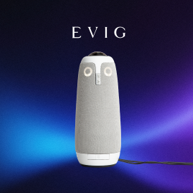How to Create Visuals From Text Using AI Tools

The process of creating visuals from text using AI tools involves a careful analysis of the source material. This requires identifying key themes and selecting an appropriate AI platform that aligns with the intended artistic outcome. While the initial generation of images may seem straightforward, the true challenge lies in refining these visuals. Understanding how to enhance storytelling through design principles can significantly elevate the final product. What strategies might be employed to achieve this?
Understanding AI-Powered Visual Creation Tools
A growing number of creators are turning to AI-powered visual creation tools to enhance their artistic processes and output.
These tools leverage advanced AI capabilities to transform text into compelling visuals, revolutionizing visual storytelling.
See also: How AI Voiceover Software Can Improve Your Content Strategy
Choosing the Right Tool for Your Needs
How can creators effectively navigate the myriad of AI visual creation tools available today? By assessing tool features in relation to user preferences, individuals can make informed choices.
Each tool offers distinct functionalities, from ease of use to customization options. Understanding these aspects empowers creators to align their artistic vision with the technology, ensuring a seamless experience that fosters creativity and independence.
Step-By-Step Guide to Creating Visuals From Text
Transforming text into compelling visuals requires a systematic approach that maximizes the capabilities of AI tools.
First, identify key themes within the text, then select an appropriate AI tool designed for text to image conversion.
Next, input the distilled concepts, allowing the AI to generate images.
Finally, refine the visuals to enhance visual storytelling, ensuring they resonate with the intended audience and convey the original message effectively.
Best Practices for Enhancing Your Visuals
Enhancing visuals created from text requires a careful balance of creativity and technical skill.
Employing color theory can evoke emotions and guide viewer interpretation, while adhering to design principles ensures clarity and cohesion.
Conclusion
In the realm of digital artistry, the creation of visuals from text mirrors the metamorphosis of a caterpillar into a butterfly. Each stage, from identifying themes to refining the final image, symbolizes growth and transformation. Just as the butterfly emerges vibrant and unique, the visuals crafted through AI tools evolve, reflecting the intricacies of human imagination. By nurturing this process with care and intention, creators can unlock a spectrum of visual storytelling that captivates and inspires, transcending mere words.




